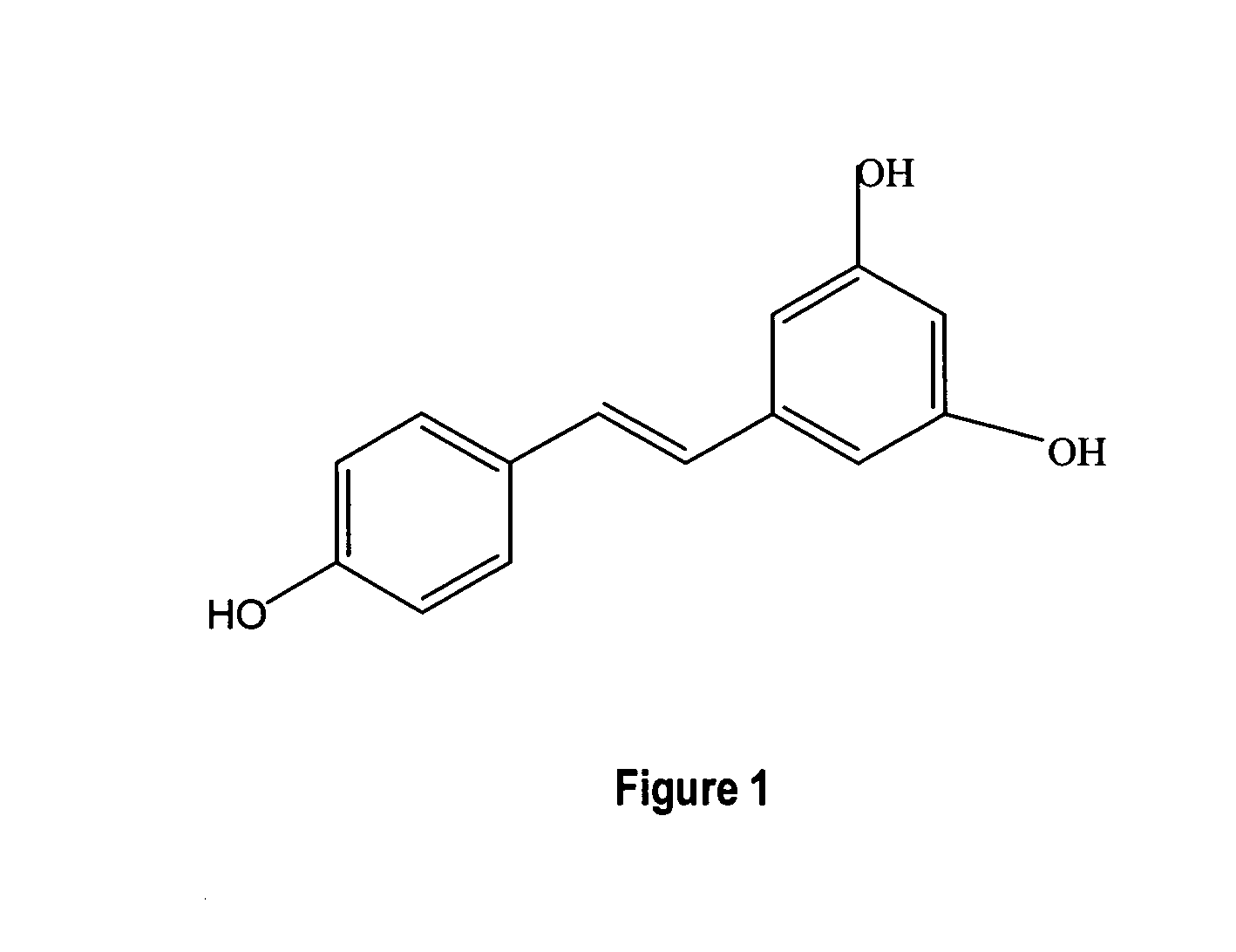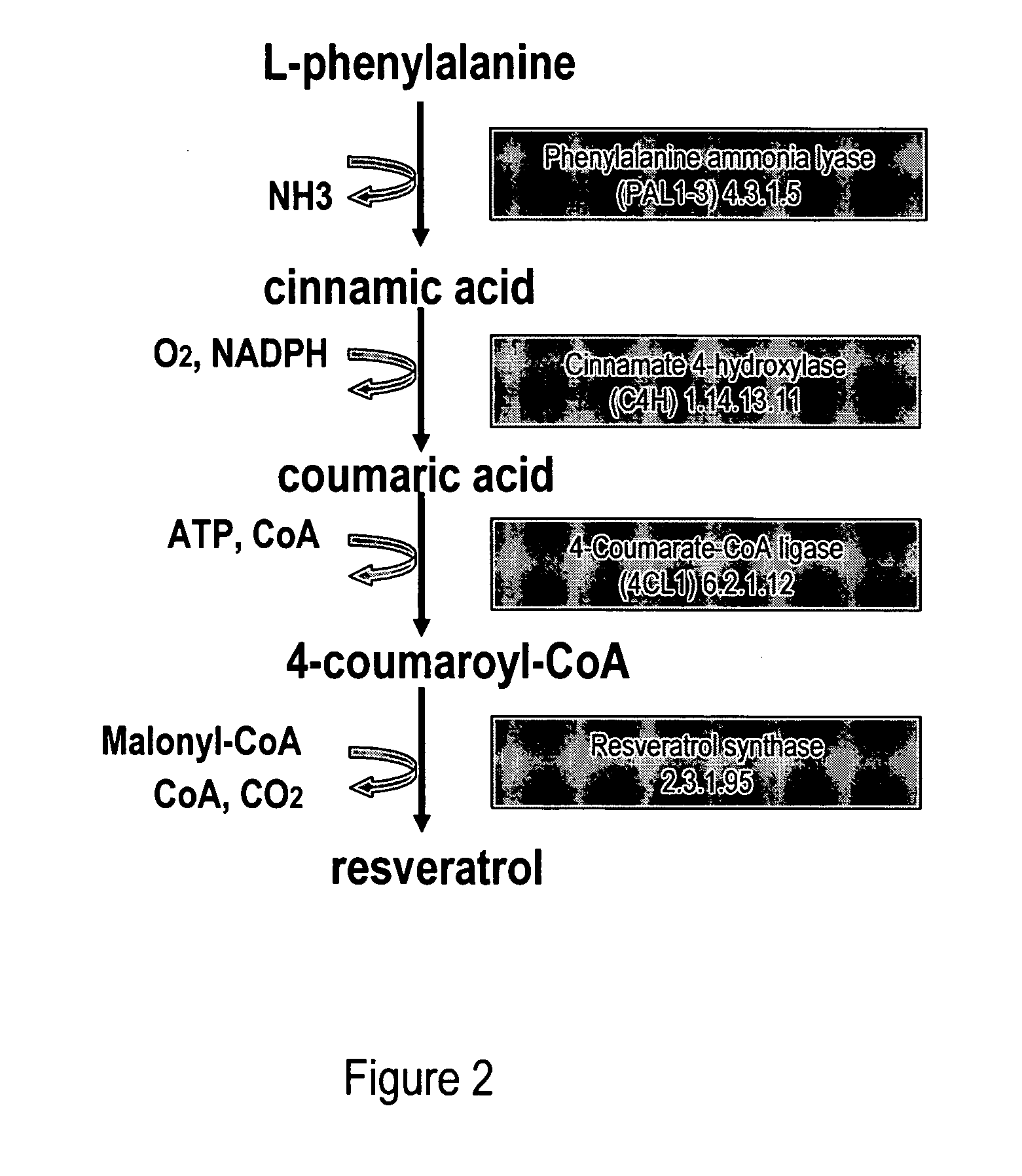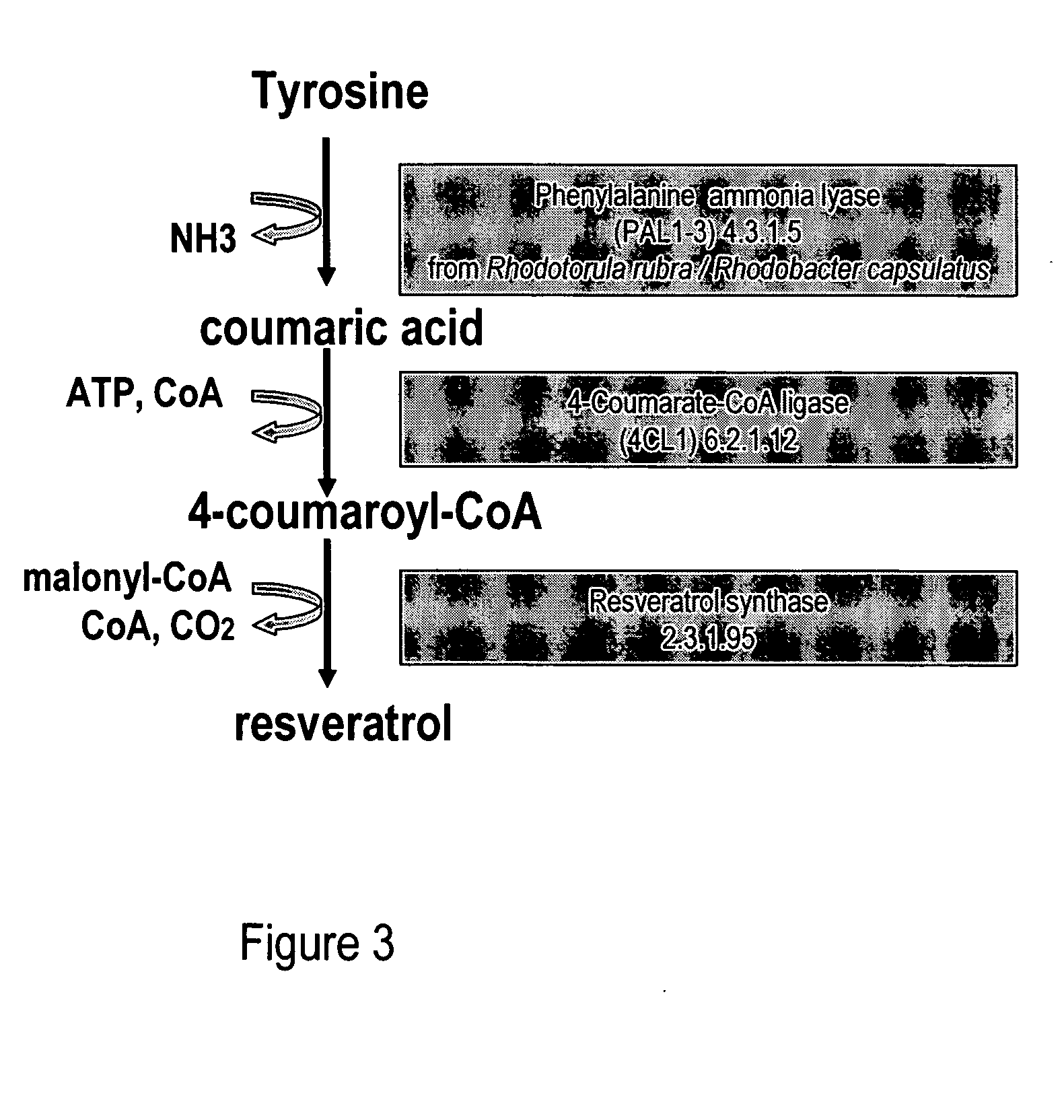Metabolically engineered cells for the production of resveratrol or an oligomeric or glycosidically-bound derivative thereof
a technology of resveratrol and metabolically engineered cells, which is applied in the direction of transferases, lyases, applications, etc., can solve the problems of low resveratrol yield, yeast that is not suitable for commercial application, and toxic to pests
- Summary
- Abstract
- Description
- Claims
- Application Information
AI Technical Summary
Benefits of technology
Problems solved by technology
Method used
Image
Examples
example 1
Isolation of Genes Encoding PAL, TAL, C4H, CPR, 4CL, and VST
[0080]Phenylalanine ammonia lyase (PAL2) (Cochrane et al., 2004; SEQ ID NO: 1, 2), cinnamate 4-hydroxylase (C4H) (Mizutani et al., 1997; SEQ ID NO: 3, 4) and 4-coumarate:CoenzymeA ligase (4CL1) (Hamberger and Hahlbrock 2004; Ehlting et al., 1999; SEQ ID NO: 5, 6) were isolated via PCR from A. thaliana cDNA (BioCat, Heidelberg, Germany) using the primers in table 1. PAL2 and 4CL1 were chosen amongst several A. thaliana homologues due to favourable kinetic parameters towards cinnamic acid and coumaroyl-CoA, respectively (Cochrane et al., 2004; Hamberger and Hahlbrock 2004; Ehlting et al., 1999).
[0081]The coding sequence of resveratrol synthase (VST) from Rheum tataricum (Samappito et al., 2003; SEQ ID NO: 7, 8) and tyrosine ammonia lyase (TAL) from Rhodobacter capsulatus (Kyndt et al., 2002; SEQ ID NO: 11, 12) were codon optimized for expression in S. cerevisiae using the online service backtranslation tool at www.entelechon....
example 2
Construction of a Yeast Vector for Expression of PAL
[0084]The gene encoding PAL, isolated as described in example 1, was reamplified by PCR using forward- and reverse primers, with 5′ overhangs containing EcoRI and Spe1 restriction sites (table 1). The amplified PAL PCR product was digested with EcoR1 / Spe1 and ligated into EcoR1 / Spe1 digested pESC-URA vector (Stratagene), resulting in vector pESC-URA-PAL. The sequence of the gene was verified by sequencing of two different clones.
example 3
[0085]Construction of a yeast vector for expression of PAL and C4H
[0086]The gene encoding C4H, isolated as described in example 1, was amplified by PCR using the forward- and reverse primers, with 5′ overhangs containing Xho1 and Kpn1 restriction sites. The amplified C4H PCR-product was digested with Xho1 / Kpn1 and ligated into similarly digested pESC-URA-PAL vector. The resulting plasmid, pESC-URA-PAL-C4H, contained the genes encoding PAL and C4H under the control of the divergent GAL1 / GAL10 promoter. The sequence of the gene encoding C4H was verified by sequencing of two different clones.
PUM
| Property | Measurement | Unit |
|---|---|---|
| dry weight | aaaaa | aaaaa |
| enzyme activity | aaaaa | aaaaa |
| molecular-mass | aaaaa | aaaaa |
Abstract
Description
Claims
Application Information
 Login to View More
Login to View More - R&D
- Intellectual Property
- Life Sciences
- Materials
- Tech Scout
- Unparalleled Data Quality
- Higher Quality Content
- 60% Fewer Hallucinations
Browse by: Latest US Patents, China's latest patents, Technical Efficacy Thesaurus, Application Domain, Technology Topic, Popular Technical Reports.
© 2025 PatSnap. All rights reserved.Legal|Privacy policy|Modern Slavery Act Transparency Statement|Sitemap|About US| Contact US: help@patsnap.com



